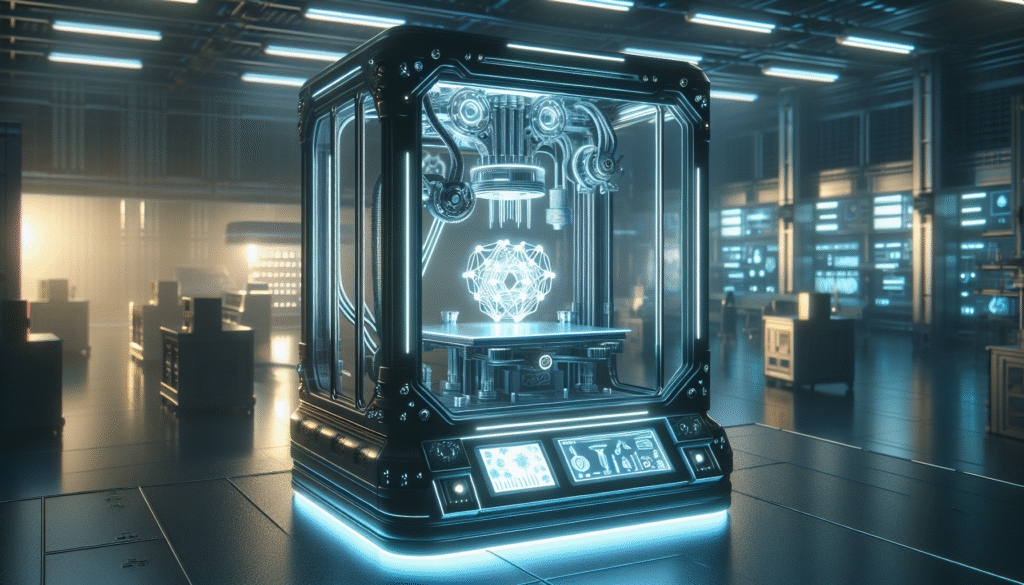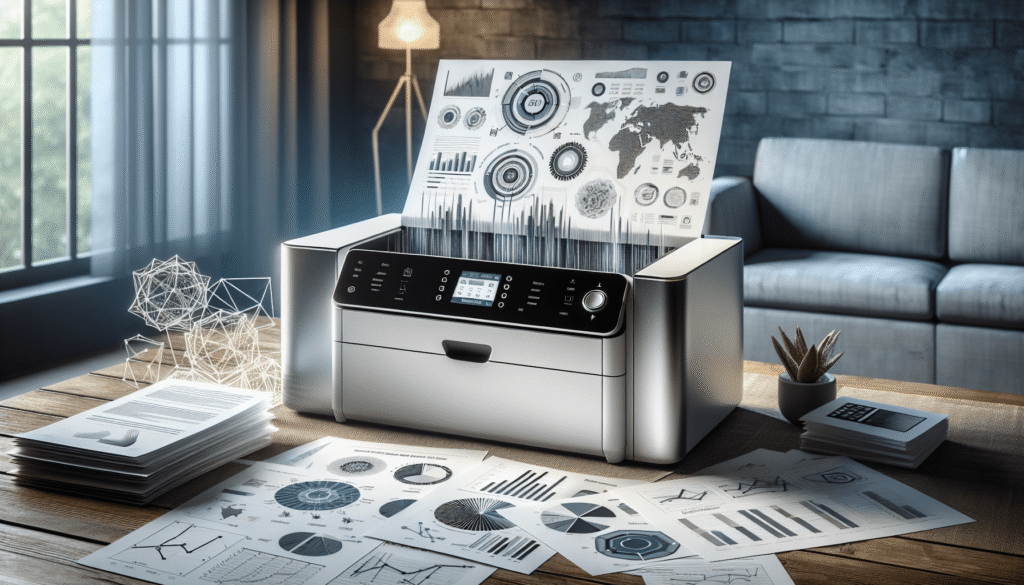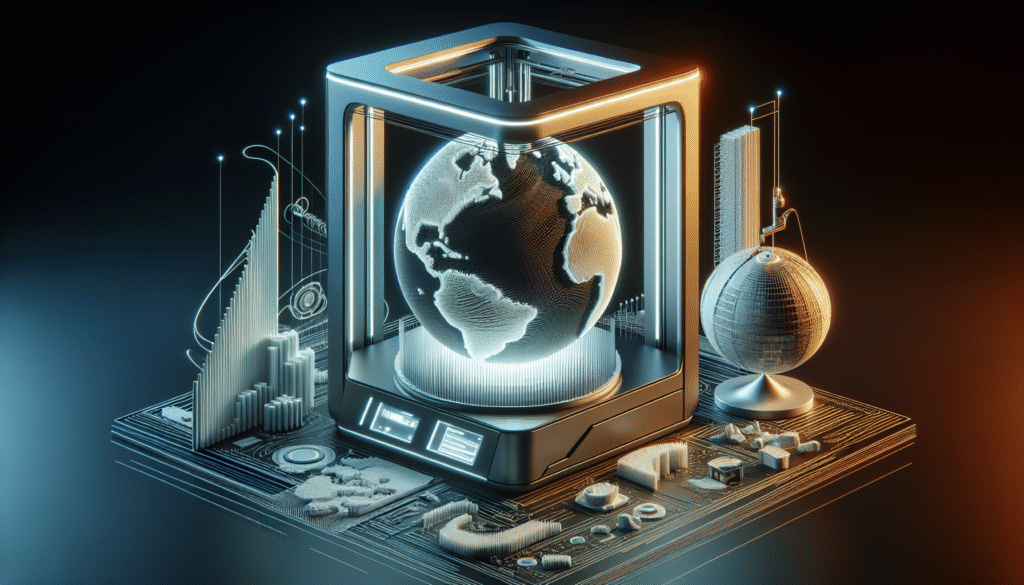Have you ever pondered the fascinating trajectory of printing technologies and what might be on the horizon as we edge toward 2025? You might think of printing in the traditional sense: paper, physical books, and perhaps the odd office report. But hold onto your ink cartridges; the world of printing is transforming at an exhilarating pace, reaching beyond mere reproduction and into the realms of innovation that were once the stuff of science fiction.

A Leap into the Future: Printing Technologies Reimagined
The printing industry is on the brink of a revolutionary crossover, merging with digital, industrial, and even biological technologies. In this evolution, it’s less about putting ink to paper and more about creating a seamless fusion between the digital and physical worlds. In the next couple of years, we will witness advances that could redefine what it means to print. Imagine a future where printers can materialize complex structures quickly, or even interact with smart technologies to give users a new dimension of creativity and efficiency.
The Rise of 3D Printing: Much More Than a Gimmick
When you think of 3D printing, you might envision plastic prototypes and unique, but otherwise trivial, objects. However, these days, 3D printers are stepping up their game. Expect significant developments in materials science, allowing for the manufacturing of goods with unprecedented precision and durability. From biodegradable materials to complex metal printing, the possibilities are expanding.
Key Developments in 3D Printing Technologies:
- Materials Expansion: Enhanced capabilities allow the use of metals, ceramics, and even organic materials.
- Speed and Precision: Advancements in printing speed without compromising accuracy.
- Bioprinting: The potential to print tissues and organs for medical research and transplant.
These innovations are bringing 3D printing to sectors such as aerospace, automotive, and medicine, challenging the manufacturing norms and inviting us to rethink the source of our everyday items.
Smart Printing: A New Perspective on Connectivity
In our increasingly connected world, smart technologies are embedding into every conceivable device, and printers are no exception. Picture a printer that knows what you need before you do, synchronizing with your digital preferences and personal schedules. This integration is not just about convenience; it’s a leap toward maximizing efficiency and sustainability in the printing process.
Features of Smart Printing:
- Cloud Integration: Direct interaction with cloud services for seamless document access and storage.
- AI and Machine Learning: Printers that optimize settings for cost-effectiveness and quality based on learned behaviors.
- IoT Connectivity: Printers integrated into smart networks, allowing remote monitoring and diagnostics.
These features mean that the printers of tomorrow are not merely output devices; they’re interactive tools that adapt to their users, fostering an environment of innovation and productivity.
Environmental Impact and Sustainability
Sustainability is no longer a trend but has become a necessity in technological advancement, and printing technologies are no exception. The transition toward more environmentally friendly practices is influencing every stage of the printing process, from the materials used to the energy consumed.
Eco-Friendly Printing: A Greener Tomorrow
Eco-friendly printing strategies aim to reduce waste, utilize renewable resources, and minimize the environmental footprint. These changes are necessary not only for preserving our planet but also for meeting the increasing consumer demand for sustainable products.
Green Printing Innovations:
- Recyclable and Biodegradable Inks: Inks that break down without harming the environment.
- Energy-Efficient Machines: Devices designed to use less power and operate efficiently.
- Circular Economy Models: Systems where printers and cartridges are reused and recycled effectively.
The drive towards green printing technologies augments the ecological responsibility of businesses, turning sustainability from an option into an integral part of the production process.

The Medical Frontier: Bioprinting Steps into the Spotlight
Bioprinting represents one of the most thrilling areas of development in printing technologies. Though it still sounds a bit like Frankenstein’s lab, the truth is more grounded and far more promising. As we enter 2025, bioprinting is poised to make substantial contributions to medical science, offering novel treatments and possibly lifesaving solutions.
The Promise of Bioprinting
Bioprinting uses similar principles to 3D printing but with a slight twist: it employs biological materials. This method can print skin for grafts, structures conducive for growing tissue, and, in the near future, perhaps entire organs.
Advancements on the Horizon:
- Skin Graft Printing: Customized skin cells for burn victims.
- Tissue Engineering: Regenerative medicine benefitting from the ability to create complex tissue structures.
- Organ Printing: Research is underway, aiming to diminish transplant shortages.
The potential impact on healthcare is astounding, providing efficient, personalized medical treatments and driving further research into these emerging fields.
Printing Beyond Earth: Space Age Printing Technologies
The exploration of space remains a constant pursuit, and as missions grow longer and more complex, the ability to produce necessary tools and parts away from Earth is crucial. Thus, space-age printing technologies are not just the stuff of imagination but a real factor in upcoming missions.
Printing in Zero Gravity: A Cosmic Creative Solution
Celestial endeavors demand innovation, often requiring scientists to reimagine standard procedures for extraterrestrial conditions. Printing in space offers a way to manufacture essential materials for repairs, research, and even human settlement.
Possibilities in Space Printing:
- In-Situ Resource Utilization (ISRU): Utilizing materials found on planetary surfaces for construction.
- Repair and Maintenance: Producing parts for spacecraft on demand.
- Habitat Construction: Printing living spaces for astronauts utilizing local resources.
Printing technologies are poised to play an integral part in humanity’s expansion into space, leveraging resources and minimizing the need for extensive supply chains.
Economic and Industry Implications
The rise of next-generation printing technologies carries substantial economic ramifications as industries adapt to incorporate new capabilities. This shift will lead to changes in job markets, production methods, and even international trade patterns.
Economic Transformation and Job Creation
While automation often carries the stigma of job reduction, the dynamism introduced by advanced printing technologies could spur new industry roles, focusing on design, maintenance, and data management.
Impacts on the Workplace:
- Reskilling Opportunities: As traditional roles evolve, upskilling becomes essential.
- Job Growth in Tech Fields: New fields like materials science and biotech will see increased demand.
- Customized Production: Greater demand for specialists who can design and manage print systems tailored to niche markets.
These shifts will transform industries, ushering in an era where economic growth is intertwined with technological innovation.
Conclusion: The Future of Printing Technologies
As we approach 2025, the potential of next-generation printing technologies is vast and transformative. From fostering sustainability to revolutionizing healthcare and redefining how we interact with the world, these advancements present exciting possibilities. Embracing these changes with an open mind and a willingness to adapt will be crucial as we step into this new era of innovation. Just think of all the untold creations that lie just beyond the horizon, waiting to be printed into reality.


